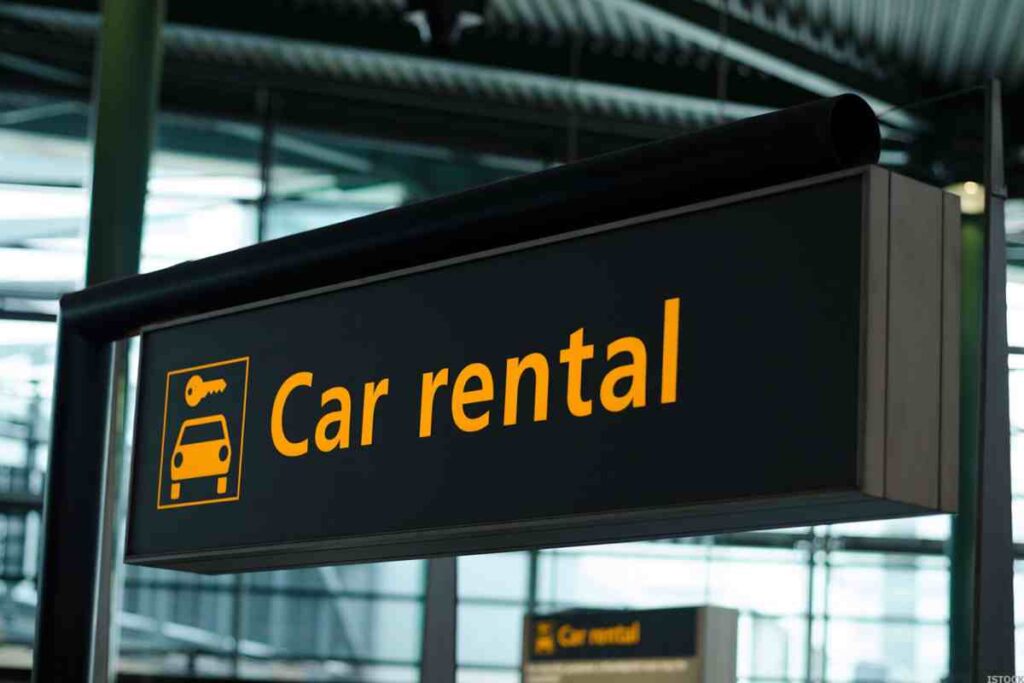Imagine you’re on a road trip in a rental car, enjoying the freedom of the open road. Suddenly, you notice a scratch on the car that wasn’t there before. Panic sets in as you wonder, ‘Will my insurance cover this?’ This is a common concern for many people renting cars, and the answer isn’t always straightforward.
In this article, we’ll delve into the complexities of rental car insurance, explore the different types of coverage available, and offer practical tips to help you navigate the process smoothly. By understanding your options and responsibilities, you can hit the road with confidence and peace of mind.
Understanding Rental Car Insurance

Rental car insurance is a type of coverage that protects you financially when you rent a car. It’s designed to cover the costs associated with potential accidents or damages that may occur while the rental car is in your possession.
Now, why is it important? Here are a few reasons:
- Financial Protection: Accidents happen, and they can be expensive. Rental car insurance can cover the costs of repairs, saving you from a hefty bill.
- Peace of Mind: Knowing you’re covered can make your trip more enjoyable. You can focus on the journey, not what might happen to the car.
- Coverage Gaps: Your personal auto insurance may not cover everything when you’re driving a rental. For instance, it might not cover loss of use charges (the rental company’s lost income while the car is being repaired).
- Legal Requirements: In some places, you’re legally required to have certain types of insurance to drive a rental car.
- Vehicle Theft: Rental car insurance can cover you if the rental car is stolen during your rental period.
Remember, it’s always a good idea to check what your existing policies (like your personal car insurance or benefits provided by credit card companies) cover before opting for rental car insurance. This way, you can avoid paying for unnecessary coverage.
When it comes to rental car insurance, there are several types of coverage that you should be aware of:
- Collision Damage Waiver (CDW): Also known as Loss Damage Waiver (LDW), this isn’t technically insurance but it can protect you from the cost of damage to the rental car. If the car gets damaged, you won’t be held responsible for repair costs or a loss in value to the vehicle.
- Liability Insurance: This covers costs if you cause damage to other vehicles or property, or if you injure someone while driving the rental car. It’s often required by law.
- Personal Accident Insurance (PAI): This covers medical costs for you and your passengers if you’re involved in an accident. This might be unnecessary if you have good health and auto insurance.
- Personal Effects Coverage (PEC): This protects you from loss or damage to your personal belongings while they’re in the rental car. If you have homeowners or renters insurance, you might already be covered for this.
- Supplemental Liability Insurance (SLI): This provides additional liability coverage above what the rental company offers. It can be useful if you’re in a serious accident and the damages exceed the rental company’s liability coverage.
- Gap Insurance (Auto Rental Collision Damage Waiver): This covers the “gap” between what your personal auto insurance pays and what you owe on your rental contract if the rental car is seriously damaged or totaled.
Remember, before purchasing any of these from the rental company, check your own auto insurance policy and your credit card benefits. You may already have some level of coverage that makes buying additional insurance unnecessary.
Coverage for Scratches and Minor Damages
Rental car insurance typically covers minor damages such as scratches and dents, but the specifics can vary depending on the rental company and the type of insurance coverage you have.
- Damage Waiver: Some rental companies, like Enterprise, offer a Damage Waiver as an optional protection product you can purchase with your car rental. This Damage Waiver covers minor damage to a rental car, such as scratches, dents, or a chipped windshield. If you choose not to purchase the Damage Waiver and the car gets damaged, you may have to pay out of pocket for any needed repairs.
- Collision Damage Waiver (CDW): When you rent a car, the price will often include CDW. However, the basic policy often does not cover glass, tires, and headlights. Even with CDW coverage, you are still responsible to pay an amount called ‘excess’ (also known as deductible).
- Size of Damage: Most rental companies consider a dent or scratch on a rental car as damage if it is larger than 5 cm. All dents larger than 5 cm or multiple dents on one panel, that weren’t marked on the existing vehicle condition report, are considered damage that has to be compensated. A smaller dent or scratch on a rental car is not a problem and is considered minor damage.
- Personal Auto Insurance: Your personal auto insurance may or may not cover the cost of repairs, so it is best to contact your insurance provider before renting a car. Depending on the situation, car insurance typically covers scratches under comprehensive or collision coverage.
- Supplemental Liability Protection: This is an optional service which provides an additional layer of liability protection. This can be beneficial if you were to cause damage to other vehicles or property while driving the rental car.
Remember, it’s always a good idea to thoroughly read the terms and conditions of your rental agreement and insurance policy to understand what is covered and what isn’t. If you’re unsure, don’t hesitate to ask the rental company or your insurance provider for clarification.
Insurance Policies for Rental Car
Let’s discuss the different types of insurance policies that can come into play when you’re renting a car:
- Personal Auto Insurance: This is the insurance policy you have on your own car. In many cases, your personal auto insurance extends to rental cars. This means that if you have comprehensive and collision coverage on your personal policy, it may cover your rental car if it’s damaged or stolen. However, it’s important to note that personal auto insurance typically doesn’t cover rental cars in some situations, such as when you’re traveling abroad or renting a car for business purposes.
- Credit Card Insurance: Many credit cards offer rental car insurance as a perk. This is often secondary insurance, meaning it only kicks in after your personal auto insurance has been exhausted. Coverage can vary widely depending on the credit card, so it’s important to call your credit card company and ask about the specifics of their coverage.
- Rental Car Company Insurance: Rental car companies offer their own insurance policies, which can include a variety of coverage options such as a Collision Damage Waiver (CDW), Supplemental Liability Protection (SLP), Personal Accident Insurance (PAI), and Personal Effects Coverage (PEC). These policies can be convenient, but they’re often more expensive than other options.
- Travel Insurance: Some travel insurance policies include coverage for rental cars. This can be a good option if you’re planning a trip and want to bundle your travel and rental car insurance into one policy.
- Non-Owner Car Insurance: If you don’t own a car and therefore don’t have personal auto insurance, you might consider a non-owner car insurance policy. This type of policy can provide liability coverage when you’re driving a rental car.
Remember, it’s always a good idea to check with your insurance provider and the rental car company to understand what is covered before you hit the road.
Process of Reporting Damages

Let’s break down the process of reporting scratches or damages to the rental car company and the insurance provider:
- Immediate Inspection: As soon as you notice the scratch or damage, inspect the car thoroughly for any other potential damages. This should ideally be done before you drive off the rental lot and again when you return the car.
- Document the Damage: Take clear, high-resolution photos of the damage from multiple angles. Make sure to photograph the overall context of the car as well, not just the close-ups of the damage. This will serve as your primary evidence.
- Notify the Rental Company: Report the damage to the rental company as soon as possible. If you’re still on the rental lot, go back to the office. If you’ve already left, call their customer service line. They’ll guide you through their specific process, which may include filling out an incident report.
- Contact Your Insurance Provider: If you’re relying on your personal auto insurance or credit card insurance for coverage, contact them to report the damage. They’ll provide instructions on how to file a claim.
- Police Report: If the scratch or damage is due to a collision, theft, or vandalism, you should file a police report. The report will provide an official record of the incident, which can be helpful when filing your insurance claim.
- Keep All Receipts and Documentation: This includes your rental agreement, all correspondence with the rental company and your insurance provider, the police report, and any repair estimates or bills.
Remember, each rental company and insurance provider may have slightly different procedures, so it’s important to understand their policies at the time of rental.
Excess Waiver Insurance
Excess Waiver Insurance, also known as Super Collision Damage Waiver (SCDW), is an optional coverage that you can purchase when renting a car. It’s designed to reduce or eliminate the excess (also known as a deductible) that you would have to pay in case of damage to or theft of the rental vehicle.
Here’s how it works:
When you rent a car, the rental company’s basic insurance usually includes a Collision Damage Waiver (CDW) and Theft Protection. However, these coverages often come with an excess, which is the amount you’re responsible for paying towards repair or replacement costs if the rental car is damaged or stolen.
For example, if the excess on your rental car is $1,000 and you have an accident that causes $2,500 worth of damage, you would be responsible for paying the first $1,000, and the rental company’s insurance would cover the remaining $1,500.
This is where Excess Waiver Insurance comes in. By purchasing this additional coverage, you can reduce or even eliminate the excess, meaning you would pay significantly less or even nothing towards the repair or replacement costs.
Does Being Married Lower Your Car Insurance?
It’s important to note that the terms and cost of Excess Waiver Insurance can vary greatly between rental companies and locations, so it’s always a good idea to read the fine print and ask questions if anything is unclear.
Tips and Advice
Here are some tips on how to avoid scratches, handle minor damages, and choose the right insurance for rental cars:
Avoiding Scratches and Handling Minor Damages:
- Drive Carefully: This might seem obvious, but the best way to avoid scratches and damages is to drive carefully. Be mindful of your surroundings, especially in tight parking lots or unfamiliar terrains.
- Park Smart: Try to park in well-lit, spacious areas to avoid potential scratches from other vehicles or objects.
- Inspect the Car: Before you start driving, do a thorough inspection of the car. If you notice any existing scratches or damages, report them to the rental company to ensure you won’t be held responsible for them later.
- Handle Damages Promptly: If you do notice a scratch or damage, report it to the rental company immediately. Don’t try to repair it yourself as this could lead to further complications.
Choosing the Right Insurance:
- Understand Your Needs: The right insurance for you depends on various factors like the duration of your rental, the type of car you’re renting, and your comfort level with risk.
- Check Your Existing Policies: Often, your regular auto insurance or your credit card company provides coverage for rental cars. Check these before you rent, so you don’t pay for unnecessary coverage.
- Read the Fine Print: Rental car companies offer various insurance options at the counter, but it’s essential to understand what each option covers. Ask questions if you’re unsure.
- Consider Third-Party Insurance: Sometimes, third-party insurers offer rental car insurance at lower rates than the rental company. Just make sure the coverage is comprehensive and the insurer is reputable.
Remember, the key to a stress-free rental car experience is understanding your insurance coverage and driving responsibly.
FAQs
Q 1. What should I do if I notice a scratch on my rental car after I’ve already started driving it?
Ans. If you notice a scratch after you’ve started driving, it’s best to document it immediately. Take clear photos of the scratch and any other damage. Then, contact the rental company to report the damage and ask for guidance on their specific procedures.
Q 2. Does rental car insurance cover scratches caused by someone else, like in a hit-and-run situation?
Ans. Typically, rental car insurance should cover damages caused by someone else. However, you may still be responsible for the deductible. It’s important to report the incident to the police and the rental company as soon as possible.
Q 3. What happens if I return the rental car after hours and then a scratch is found?
Ans. If a scratch is found after you return the car, the rental company will likely contact you to discuss the damage. This is why it’s crucial to thoroughly document the car’s condition at drop-off, even if you’re returning it after hours.
Q 4. How can I dispute a damage claim from a rental car company if I believe I’m not responsible for the scratch?
Ans. If you believe you’re not responsible for the damage, you can dispute the claim. Provide your documentation and photos showing the car’s condition at pick-up and drop-off. If you have a credit card that provides rental car insurance, contact them for assistance.
Q 5. What are some tips for documenting the condition of my rental car at pick-up and drop-off?
Ans. Take clear, well-lit photos of the car from multiple angles at pick-up and drop-off. Pay special attention to any existing damage. It’s also a good idea to take a video walkthrough of the car.
Q 6. Does rental car insurance cover interior damages, like stains or tears in the upholstery?
Ans. Coverage for interior damages can vary by policy. Some may cover it, while others won’t. Always check the specifics of your policy and consider taking photos of the interior at pick-up and drop-off.
Q 7. If I have an international driver’s license, will my rental car insurance still cover scratches and other damages?
Ans. Generally, as long as you’re legally allowed to drive in the country where you’re renting, your rental car insurance should still apply. However, it’s always best to check with the rental company and your insurance provider to be sure.
Conclusion
In conclusion, figuring out if your rental car insurance covers scratches can be tricky, but having the right information makes all the difference. It’s essential to know about the different types of insurance available, like collision damage waivers, your own car insurance, and even credit card benefits.
Understanding what kinds of scratches might happen, being aware of the rental company’s policies, and keeping detailed records of any damage can help you avoid unexpected costs. By taking a few precautions and being ready to deal with any scratches responsibly, you can enjoy your rental car experience without unnecessary stress.

Join Shubham, a finance enthusiast with a mission to empower readers with the knowledge and tools to achieve financial freedom. Discover smart financial advice and unlock your financial potential.


